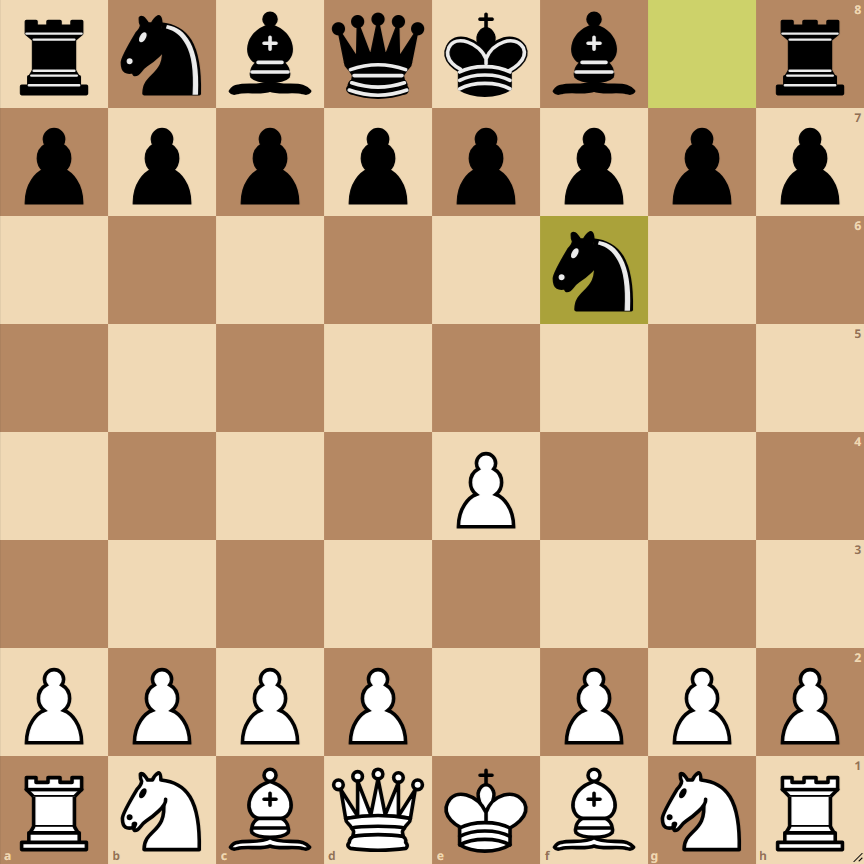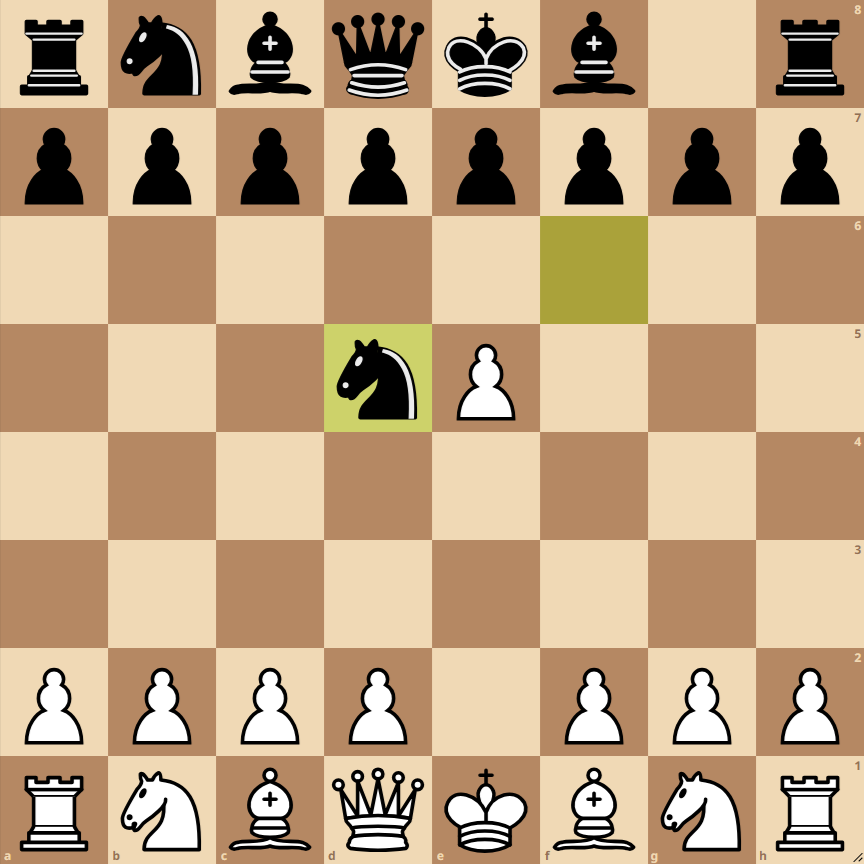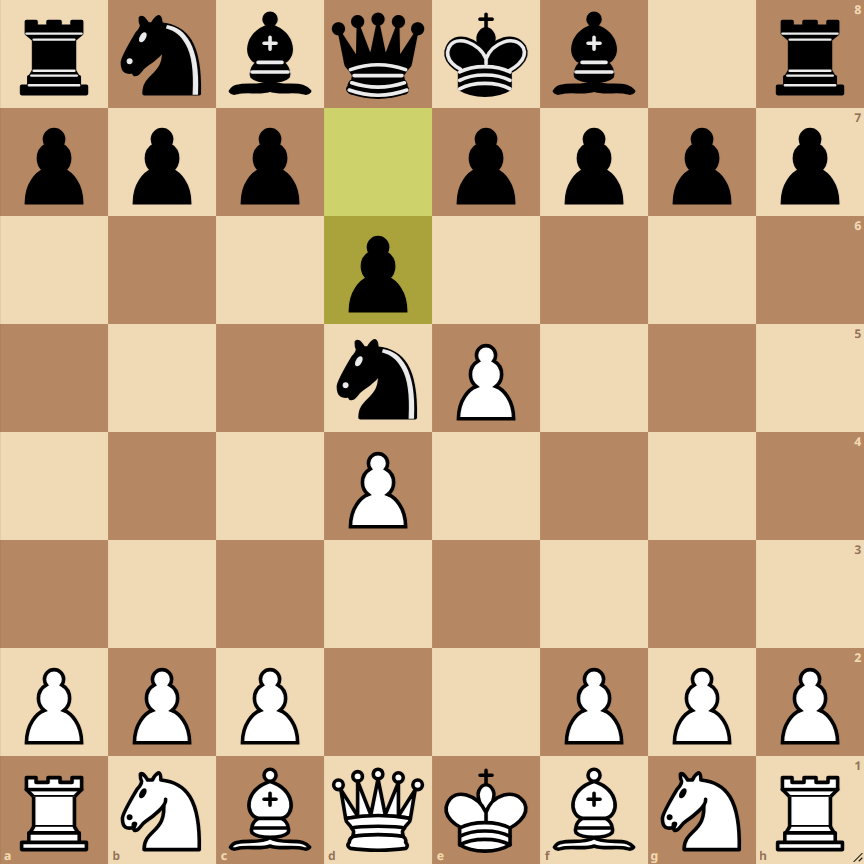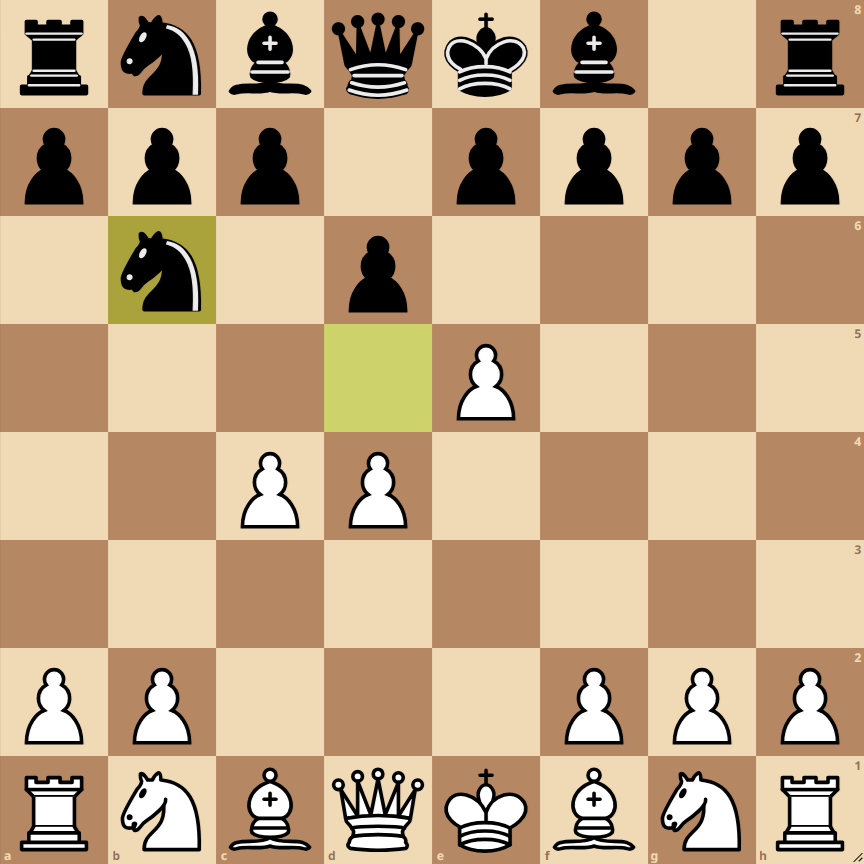How to Play the Alekhine Defense, Four Pawns Attack, Fianchetto Variation



The Alekhine Defense, Four Pawns Attack, Fianchetto Variation, is an aggressive and dynamic opening in chess. It is characterized by the early advance of white pawns in the center and the fianchetto of the black bishop. Below, the key moves of this opening are described:
- 1. e4 Nf6: White opens with the king’s pawn, while black responds with the knight to f6, challenging the center from the side.
- 2. e5 Nd5: White advances their pawn to gain space and displace the black knight, which repositions itself on d5.
- 3. d4 d6: White continues to occupy the center with another pawn. Black responds with d6, preparing to free their queen’s pawn and start undermining the white center.
- 4. c4 Nb6: White aims to solidify their pawn on d5. The black knight retreats to b6, maintaining pressure on the center.
- 5. f4 g6: White strengthens their pawn chain in the center. Black responds with g6, planning to fianchetto their king’s bishop and control the central squares from the side.
Variations of the Alekhine Defense, Four Pawns Attack, Fianchetto Variation


1…d5
An alternative for black is to play 1…d5, directly challenging the center from the start. This line leads to more symmetrical pawn structures and a more balanced game.
2…Nd7
After 2. e5, black can opt for 2…Nd7, planning to reposition the knight to c5 or e5. This move aims to counteract the white central advance without moving the knight to the side of the board.
3…c5
A common breakthrough for black is 3…c5, attacking the white center from a flank. This move increases tension in the center and can lead to a more open and tactical game.

